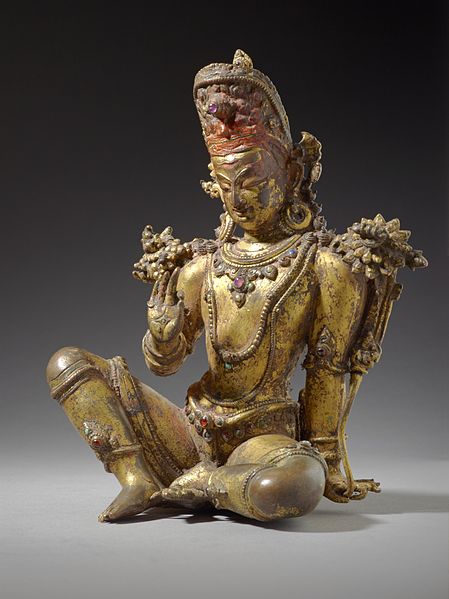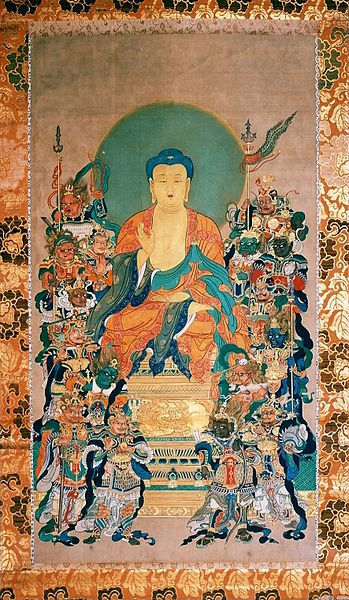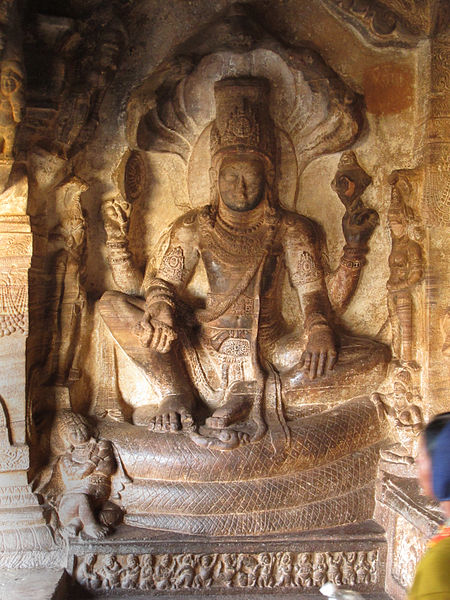A gandharva is a member of a class of celestial beings in Indian religions, such as Hinduism, Buddhism, and Jainism, whose males are divine performers such as musicians and singers, and the females are divine dancers. In Hinduism, they are regarded to be the celestial demigods who serve as the musicians of the devas.
Wood carving of a gandharva, Thailand
Linga inside a railing (left), being worshipped by gandharvas winged creatures. Art of Mathura, circa 100 BCE.
The horse-head Tumburu or Tumbara is described as best among gandharvas in Hinduism
Dhṛtarāṣṭra, one of the Four Heavenly Kings and the king of the gandharvas.
Deva means "shiny", "exalted", "heavenly being", "divine being", "anything of excellence", and is also one of the Sanskrit terms used to indicate a deity in Hinduism. Deva is a masculine term; the feminine equivalent is Devi. The word is a cognate with Latin deus ("god") and Greek Zeus.
In the earliest Vedic literature, Devas are benevolent supernatural beings; above, a gilt-copper statue of Indra, "Chief of the Gods", from 16th-century Nepal.
Shiva/Rudra has been a major Deva in Hinduism since the Vedic times. Above is a meditating statue of him in the Himalayas with Hindus offering prayers.
The 12 Devas protecting Buddha, by Tani Bunchō. The Hindu Devas were adopted by Japanese Buddhists in the first millennium as Jūni-ten
Vishnu (above) is one of the Vedic Devas. The third Valli of the Katha Upanishad discusses ethical duties of man through the parable of the chariot as a means to realize the state of Vishnu, one with Self-knowledge.








